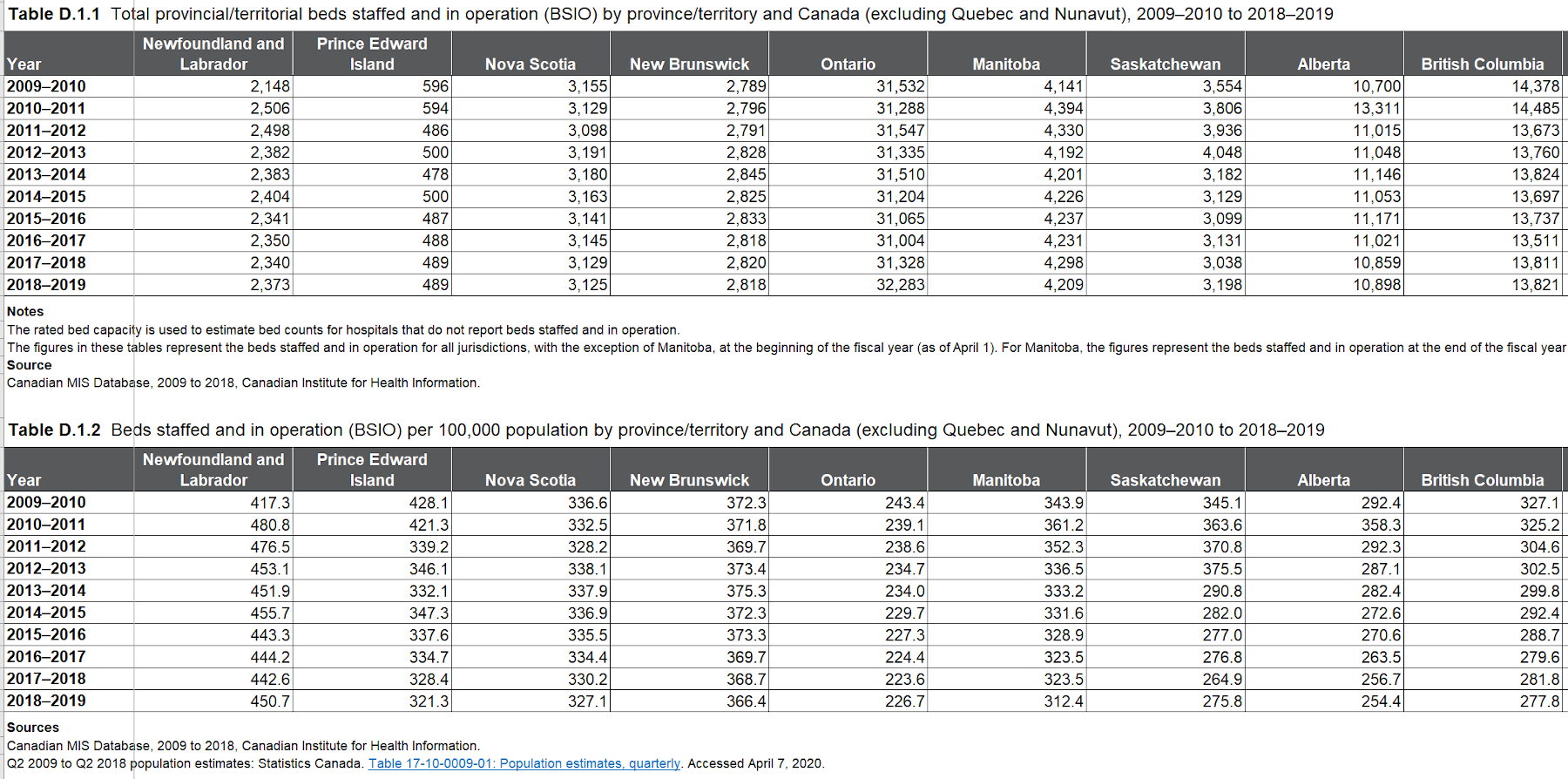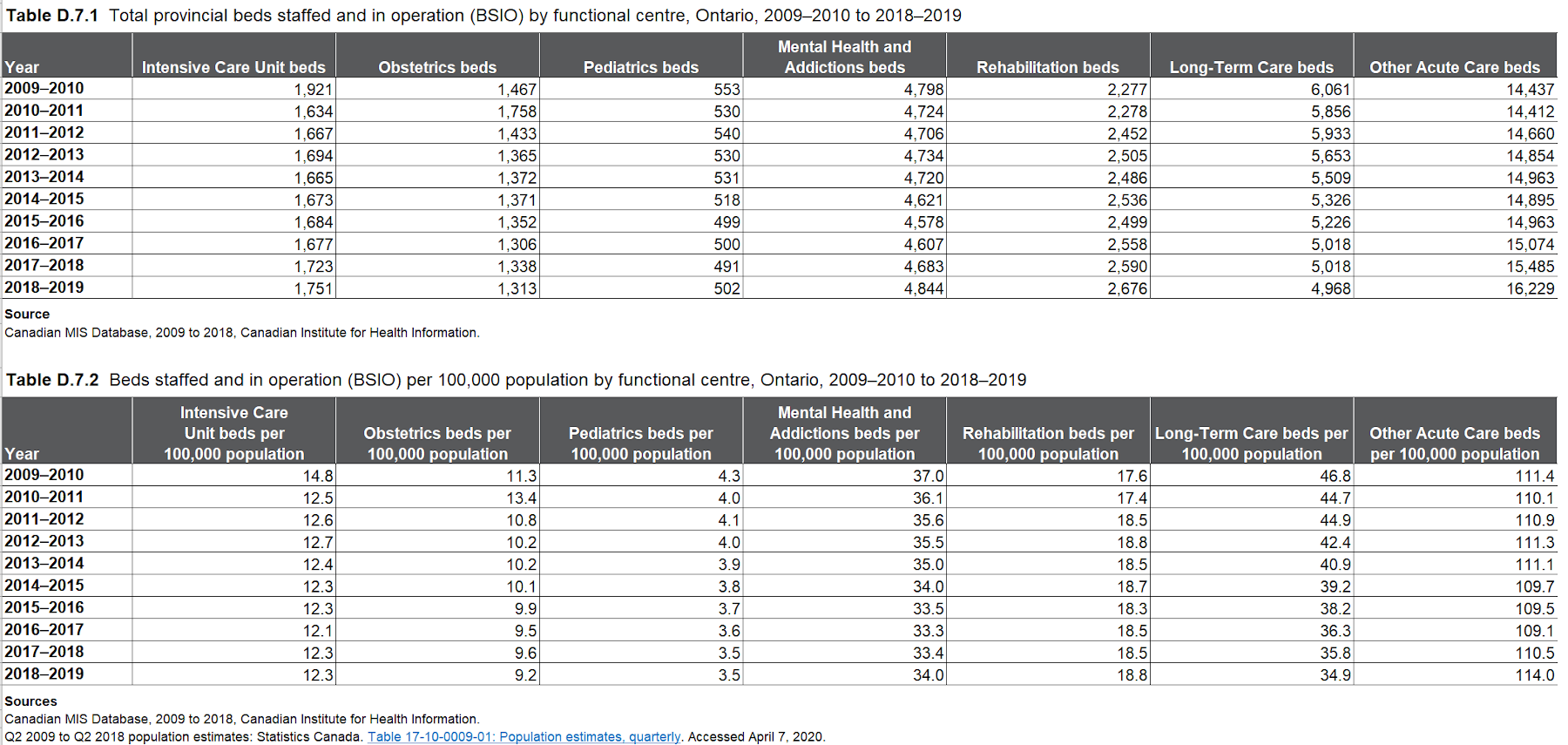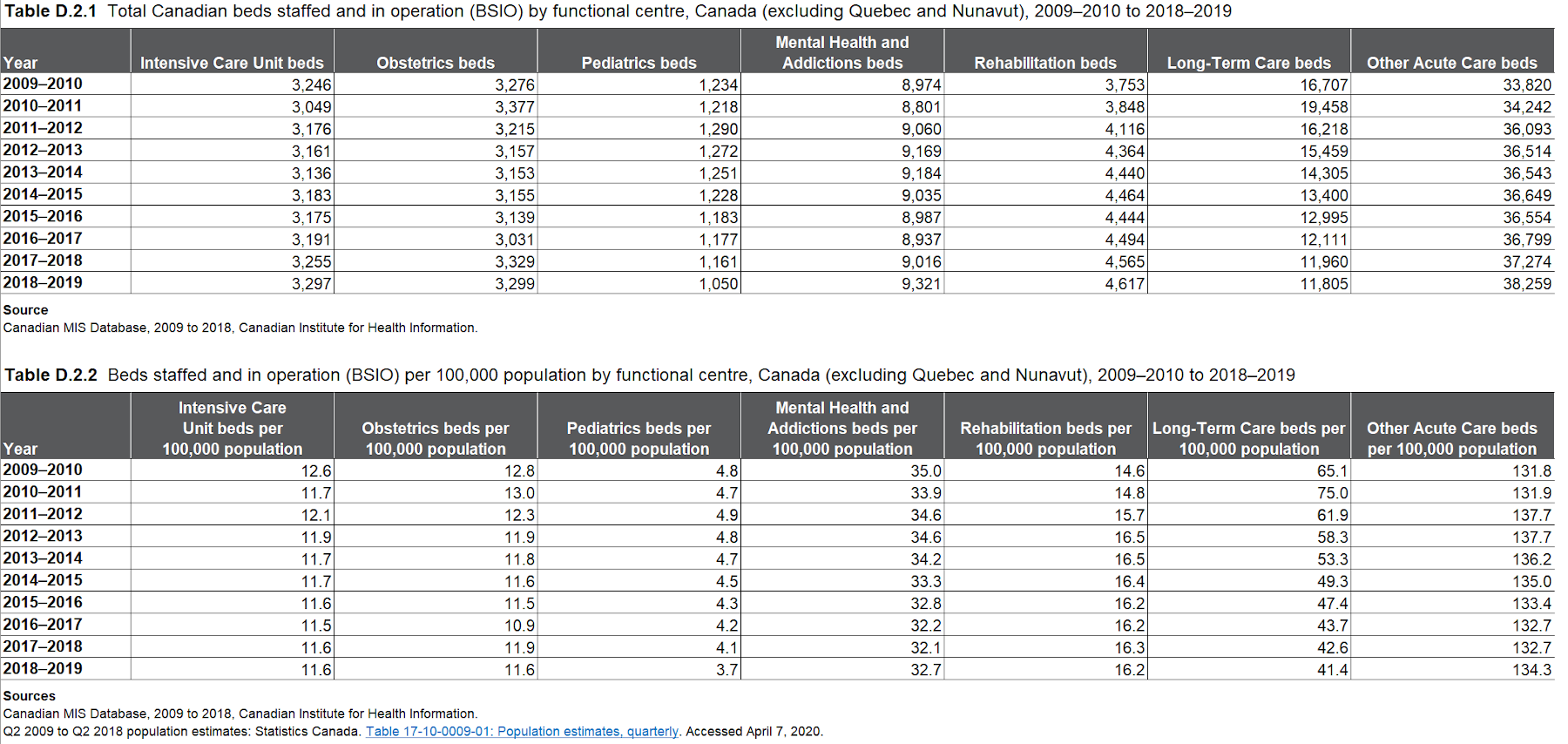Ford’s Hallway Medicine: Declining Hospital Beds in Ontario
The massive cut in the number of hospital beds in Ontario in the 1990s is, by now, well known. Community and labour movement campaigns over the last fifteen years stopped the decline in the number of beds, but the push for cuts is relentless. Hospital beds per capita have continued to decline right up until the most recent data reported. Moreover, Ontario remains a low-capacity outlier – with far fewer beds per capita than other provinces.

This Canadian Institute for Health Information (CIHI) chart (above) shows a 6.9% decline in hospital beds per capita from 2009/10 to 2018/19. Ontario had fewer beds than any other province reported per capita. The next lowest (Alberta) had 12.2% more beds in 2018-19.
There was even a decline in the absolute number of Ontario ICU, Obstetric, Pediatric, and Complex Continuing Care (LTC) beds, with the latter category seeing the sharpest decline. Acute, Rehab, and Mental Health and Addiction beds increased – although the increase in the latter was so modest that beds per capita still declined.

The decline continued after the election of the PC Ford government in 2018. The most recent data reported by CIHI is for 2020-21 – the start of COVID. Overall, the number of beds per capita in Ontario hospitals has gone down from 226.7 in 2018/19 to 224.9 in 2020-21, a 0.8% decline in two years. Since 2009/10, that is a 7.6% decline.
| Intensive Care | Obstetrics | Pediatrics | Mental Health | Rehabilitation | Long-Term Care | Other ACute | Total | NICU beds |
|---|---|---|---|---|---|---|---|---|
| 14,729,324 | 14,729,324 | 14,729,324 | 14,729,324 | 14,729,324 | 14,729,324 | 14,729,324 | 14,729,324 | 14,729,324 |
| 12.8 | 8.8 | 5.8 | 32.5 | 16.9 | 34.9 | 113.2 | 224.9 | 2.4 |
If we had stayed at the same level as 2018/19, we would have an extra 265 beds – a little more than one extra average-sized hospital. If Ontario had the same number of hospital beds per capita as in 2009/10, we would have an extra 2,724 hospital beds. That is the equivalent of four very large hospitals.
This decline is hardly consistent with Ford’s promise to end hallway healthcare. It occurred despite a rapidly aging population and certainly did not put Ontario in a good position to deal with COVID.
Canada (excluding Quebec) had 20.1% more acute care beds per capita than Ontario in 2020-21.
| Intensive Care | Obstetrics | Pediatrics | Mental Health | Rehabilitation | Long-Term Care | Other ACute | Total | NICU beds |
|---|---|---|---|---|---|---|---|---|
| 38,000,056 | 38,000,056 | 38,000,056 | 38,000,056 | 38,000,056 | 38,000,056 | 38,000,056 | 38,000,056 | 38,000,056 |
| 12.3 | 10.6 | 5.6 | 33.0 | 12.5 | 31.7 | 135.9 | 246.2 | 4.3 |
For all categories of beds, Canada (excluding Quebec) had 9.5% more hospital beds per capita than Ontario.
The low number of acute care beds in Ontario is part of a long-term trend. If anything, it has gotten worse. For acute care, Canada, excluding Quebec, had 17.8% more beds per capita in 2018-19 and 18.3% more in 2009-10.

Interestingly, there is no sign in this data of the major increases in hospital beds claimed by the Ford government. Ontario hospital beds “staffed and in operation,” as reported by CIHI in 2019-20 and 2020-21, were up only 1.5% in 2019/20 and 1.1% in 2020/21.
Notably, Statistics-Canada figures indicate that hospital employment by the end of 2021 was at the same level as when the Ford government assumed power – 247,000. It will be very interesting to see CIHI’s report on bed numbers for 2021-22 when it comes out. •
This article first published on the OCHU Left Words website.





